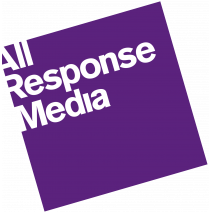The Dutch have begun to use traditional media more deliberately in recent years, over social media platforms that are now starting to be considered a pastime exercise. The Media Experience Survey 2020 (a single source study conducted on behalf of the Dutch Advertiser Association, Outreach, Magazine Media Association and NDP Newsmedia) highlights this transition and provides qualitative information about the power of media.
Pastime
The sixth edition of the research, (the first was conducted in 1997) shows an important change in what we consider a pastime, and how we engage with them. Over time, traditional media such as TV and print have been consumed less as a pastime activity, but in the case of social media, this has been increasing since 2015.
Considering current events, we are beginning to see this trend flipped on its head. Getting up to speed with news quickly has increasingly become a task of the traditional medium and their online platforms, while the use of social media for this need is decreasing. This research was conducted before Covid-19, so it’s likely that this trend has continued to grow over the past few months.
Researchers concluded that TV and print media are more consciously engaged with, which is not the case for social media. Traditional media platforms are therefore increasingly consumed in order to obtain information, stay informed, relax or to inspire new ideas.
Effectiveness of advertising
According to the theoretical research model, this shift in media experience has consequences for the effectiveness of advertising. Only filling an empty moment, such as with social media, offers the advertiser a less involved consumer – leading to the potential for less effective advertising. Due to the ‘high involvement’ with traditional media, advertisers can rely on more consumer attention and more engagement in advertising.
Advertising annoyance
Respondents also typified their experiences with advertising in the survey: advertising during media consumption is more likely to cause irritation than in previous measurements. There are several reasons for this, including disrupting the viewing or listening experience. The top 3 areas cited with advertising annoyance are streaming services, social media platforms and mobile apps. Users here are far less tolerating of interruptions during these types of media consumption.
Another cause for annoyance is when advertisements do not fit the context, or if they infringe on privacy. In the latest edition of the study, fewer respondents perceived advertising as useful or credible. There are four medium types that are noted as less annoying: newspapers, magazines, door-to-door newspapers and outdoor advertising. After all, the user can determine whether they engage with an advertisement through these media according to the researchers, as they are much more in control.
ARM viewpoint
It’s no surprise that consumers aren’t particularly fond of advertising. In fact, in the Netherlands, advertising usually competes with ‘dog shit on side walks’ when it comes to the most annoying things in everyday life.
Nevertheless, it is reassuring to learn from this piece of research that a ‘high involvement’ medium like TV does indeed keep the consumer in an ‘active’ mood; active enough anyway to react to commercials (e.g. following up on the call to action) even if the obvious and probably socially acceptable reaction is that they care less.
Stay safe and stay in touch with your ARM client teams! Read more information on our TV services.


